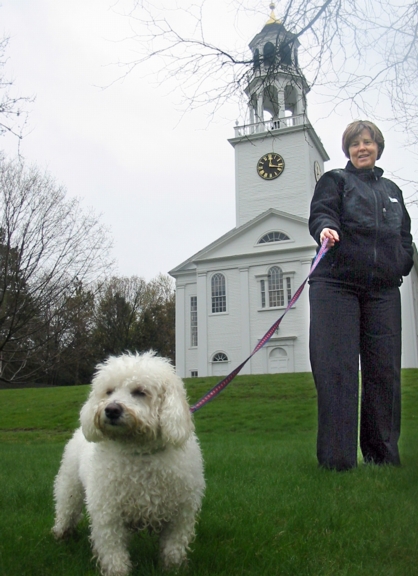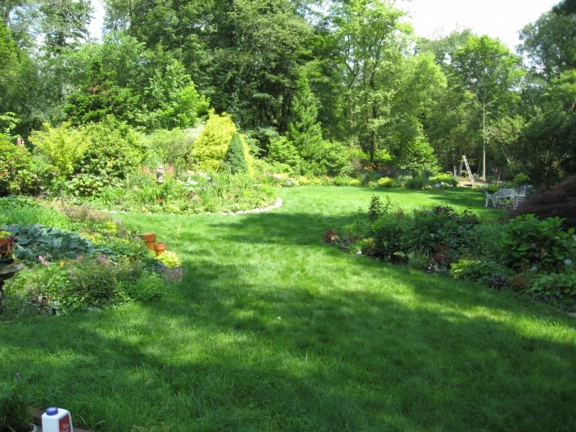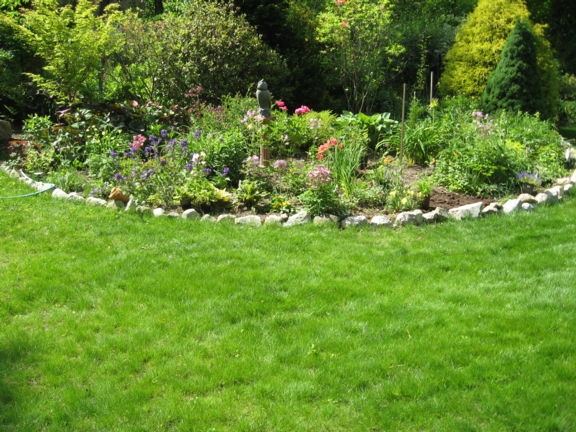This product sounds very similar to "No Mow" and "Lo Gro" lawn mixtures found in the Midwest. These products are drought tolerant blends of low-growing varieties of fine fescues such as Red Fescue, Hard Fescue and Chewings Fescue. They have fine leaves and are well suited to low fertility soils, low maintenance and shaded situations. Since they are cool season grasses, they grow well during the cool months (60-75 degrees F) of the year. The suggested rate of seeding is 5#'s /1000SF. Depending on how large your area is the cost can be anywhere from $3.75 to $6.00 per pound.
I have heard from friends who have used these kinds of fescue blends--they seem to do best in filtered to sunny light and in areas that do not get intense visual scrutiny like side yards, leach field areas and low traffic back yards. Also, fescue is a clump grass so it may take a while to fill in and not look spotty. The areas where my friend says it doesn't do as well is where the soil is really bony and in deep shade. If you still want that manicured lawn look in the areas near walkways and patio spaces, you might want to choose a more traditional lawn mix or even a hybrid tall fescue turf mix that has fine leaves.
Blog Post
Pearl's Premium: An Environmentally Friendly Lawn Seed

Pearl's Premium, named after Madnick's mother and his daughter, is available in two different mixes: a shady-site version, which is appropriate for lawns fully in the shade to 50% sun; and a sunny mix for sites with 50% sun to full sun. The shady mix consists of five different fescues (fescue is a type of grass), three of which are native and two "adaptive," to use Madnick's term. The sunny mix contains three of the fescues in the shady mix, plus a special deep-rooted adaptive bluegrass and an adaptive ryegrass.
There are four important benefits of Pearl's Premium turf compared with conventional Kentucky bluegrass turf:

2. No need for chemicalsConsting of native and adaptive grasses, Pearl's Premium does not require fertilizers and other chemicals. In fact, one of Madnick's primary purposes in developing these mixes was to help detoxify our back yards. Runoff from American lawns has become a witches brew: nutrients that cause algae blooms in surface waters; herbicides that are used to kill weeds; and pesticides to kill grubs, insects, and other assorted organisms attempting to eek out a living in our lawns. Some health advocates suggest that these lawn chemicals are responsible for such problems as the surge in cancers being found in pets. It is concerns like these that have led the province of Quebec and Westchester County, New York to ban most lawn chemicals.
3. Infrequent mowingPearl's Premium is very slow-growing and, according to Madnick, only needs mowing once a month--instead of once a week for most lawns. By mowing less, you'll not only use less gasoline and generate less air pollution (and many lawnmowers spew out far more pollution than cars with modern pollution-control equipment), but you'll also save a lot of time. You can put that time to better use--maintaining a vegetable garden, going for walks in the woods, reading, or whatever.
4. It grows where other lawn mixes don'tWhile it admittedly takes some effort to get Pearl's Premium established, it has proved successful in locations where all other efforts to establish lawn have failed--beneath trees, for example. Madnick's website is full of testimonials about this, and the reviews he makes available on his website are quite positive. I'll be testing this myself and will report back!
SUPPORT INDEPENDENT SUSTAINABILITY REPORTING
BuildingGreen relies on our premium members, not on advertisers. Help make our work possible.
See membership options »Madnick spent years perfecting the two mixes he offers, growing hundreds of plots. He told me that sales are tripling annually and that the seed has now been used for over 4,000 lawns. More than 100 professional landscapers or landscape architects have also used it--either for their own lawns or for lawns of clients.

Lawns produced from Pearl's Premium are also going to have a different look and feel than the bluegrass lawns most of us are used to. The grass is softer and not as robust and thick. If you want the "Chem-lawn" look, you'll probably want to stick with Kentucky bluegrass.
Pearl's Premium can be established on freshly graded soil around a new house or by mowing an existing lawn as low as possible--right down to the ground almost--and scratching up the surface with an iron rake before seeding. Ideally, the soil temperature should be in the range of 50-70 degrees Fahrenheit. The key to successful lawn establishment in the spring is to water regularly (as often as daily) for the first month as the lawn is being established. If planting in the fall, it's often possible to get by with less watering.
Pearl's Premium is fairly expensive: list price of $35.95 for a 5-pound bag of either mix, and $145.95 for a 25-pound bag. But once established, maintenance costs are low, so you should save in the long run. You can buy direct from the company's website or, in certain states, find the seed at Whole Foods stores.
Follow instructions on the company's website for how to plant and establish the seed. Given the cooler-temperature requirements for seed germination, it's getting pretty late this spring to establish a lawn (though I'm going to try!); you might want to wait until fall.
For more information:
Pearl's Premium, Inc.
Wayland, Massachusetts
508-653-0800
www.pearlspremium.comI invite you to share comments on this blog. Has anyone tried out one of these mixes or another low-water, low-chemical turfgrass?
Alex Wilson is the executive editor of Environmental Building News and founder of BuildingGreen, LLC. To keep up with his latest articles and musings, you can sign up for his Twitter feeds.
Photos and graphics: Pearl's Premium, Inc.See more on this product in the GreenSpec Guide
Published May 28, 2010 Permalink Citation
(2010, May 28). Pearl's Premium: An Environmentally Friendly Lawn Seed. Retrieved from https://www.buildinggreen.com/blog/pearls-premium-environmentally-friendly-lawn-seed



Add new comment
To post a comment, you need to register for a BuildingGreen Basic membership (free) or login to your existing profile.